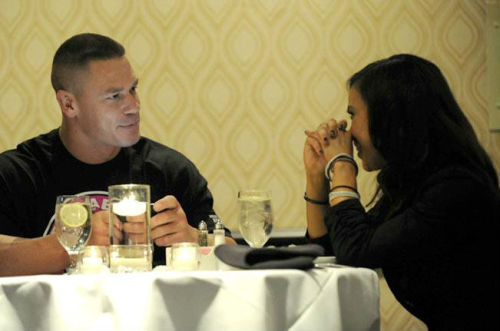Romance Among Adolescents. In addition, we certainly have a forthcoming interactive instrument on childhood impoverishment most people expect you’ll relieve at the end of 2021.
Syndication Meeting:
Guide Go Out:
Relevant Alerts:
The little one developments databank of indicators concerning baby and teens wellbeing is not really getting refreshed making sure that we are going to consider info resources and merchandise key toward the function of policymakers as well as other stakeholders, such as for instance:
Trends in a relationship among youngsters
Although matchmaking in puberty remains popular, pupils inside 8th, 10th, and 12th score in 2017 happened to be less likely to want to submit matchmaking than the company’s equivalents happened to be in 1992. This change is more pronounced for twelfth-grade pupils, the spot that the symmetry of teens who report these people did not meeting much more than tripled, from 15 percentage in 1992 to 49 percent in 2017. In the same cycle, the proportion of 10th graders exactly who never date greater from 28 to 55 %, as well percentage of eighth graders enhanced from 47 to 71 percentage. A lot of this build has come recently, employing the symmetry of 12th graders never ever matchmaking boosting by 7 percent factors from 2014 to 2017, and so the symmetry of tenth and 8th graders boosting by 7 and 9 ratio spots, correspondingly, covering the very same cycle (Appendix 1).
In the same development, the amount of teenagers which document these people date more often than once every week continues lowering. From 1992 to 2017, the ratio of twelfth graders whom revealed the two continued more than one day weekly dropped from 34 to 14 percentage. In identical course, the amount of tenth graders who described regular romance also rejected, from 17 to 7 percentage. The percentage of eighth graders that date usually continued rather continual from 1992 to 2011, between 7 and 8 %. But the portion have since decreased, and was 3 % in 2017 (Appendix 2).
Distinctions by age
In 2017, over two-thirds (71 %) of eighth-grade people documented never online dating, in comparison with 55 percentage of tenth graders, and 49 % of twelfth graders (Appendix 1).
The express of people that date a couple of times each week raises markedly as we age, from 3 percent among eighth-grade youngsters, to 7 percentage of tenth-grade college students, to 14 percentage of 12th graders, in 2017 (Appendix 2).
Variations by gender
In 2017, male eighth and 12th graders revealed larger numbers of frequent relationship than her feminine alternatives, but in 10th class, each men and women had been around equally apt to state constant a relationship (Appendix 2). Women whatsoever three mark degrees happened to be very likely than men to document which they never evening, though this break decreases at high standard amounts (Appendix 1).
Differences by race/Hispanic origin*
Thinking and methods around adolescent a relationship is affected by national, historical, and various other aspects, like those related to competition and race. Non-Hispanic white and Hispanic pupils in the twelfth score happened to be likely than non-Hispanic black colored people to submit the two meeting typically. In 2017, 16 percentage of non-Hispanic white and 15 percent of Hispanic twelfth graders reported repeated relationships (many times each week), in contrast to 10 percent of non-Hispanic black color youngsters. In 10th grad too, non-Hispanic white and Hispanic children are very likely to time regularly (7 percent among both groups) than non-Hispanic black  people (5 %). In eighth grade, however, non-Hispanic black colored people described the top rate of repeated relationships (5 per cent), as well as Hispanic (4 percentage) and non-Hispanic light students (2 percentage; Appendix 2).
people (5 %). In eighth grade, however, non-Hispanic black colored people described the top rate of repeated relationships (5 per cent), as well as Hispanic (4 percentage) and non-Hispanic light students (2 percentage; Appendix 2).
In twelfth score, group and Hispanic source may also be linked to the probability of never matchmaking. In 2017, 51 % of Hispanic and 50 per cent of non-Hispanic black colored college students reported never online dating, followed by 45 percentage of non-Hispanic light youngsters. In 10th score, non-Hispanic white college students were less likely to document never online dating, at 52 % in 2017, weighed against 59 per cent of these non-Hispanic black color friends, and 54 per cent inside Hispanic colleagues. Among eighth graders, non-Hispanic white in color youngsters described the very best rates of never ever matchmaking (72 percentage), followed closely by their unique Hispanic and non-Hispanic black color associates (70 and 66 per cent, correspondingly; Appendix 1).
*Estimates for white in color and black colored childhood exclude Hispanic kids and kids of several racing. Hispanic childhood include people identifying as Mexican American or Chicano, Cuban American, Puerto Rican, or other Hispanic or Latino no different racial/ethnic people.
Variance by parental education
In 2017, there is maybe not an assured romance between adult education and repeated relationships. One example is, among 8th graders, 4 percent of people with mother that didn’t grad from high school described frequent relationship, compared to 3 percentage of children with a mom or dad with a bachelor’s amount. In a similar fashion, among 10th graders in 2017, 7 percent of people with moms and dads who did not graduate from university said repeated romance, compared with 7 percentage of kids with parents with a bachelor’s diploma (Appendix 2).







